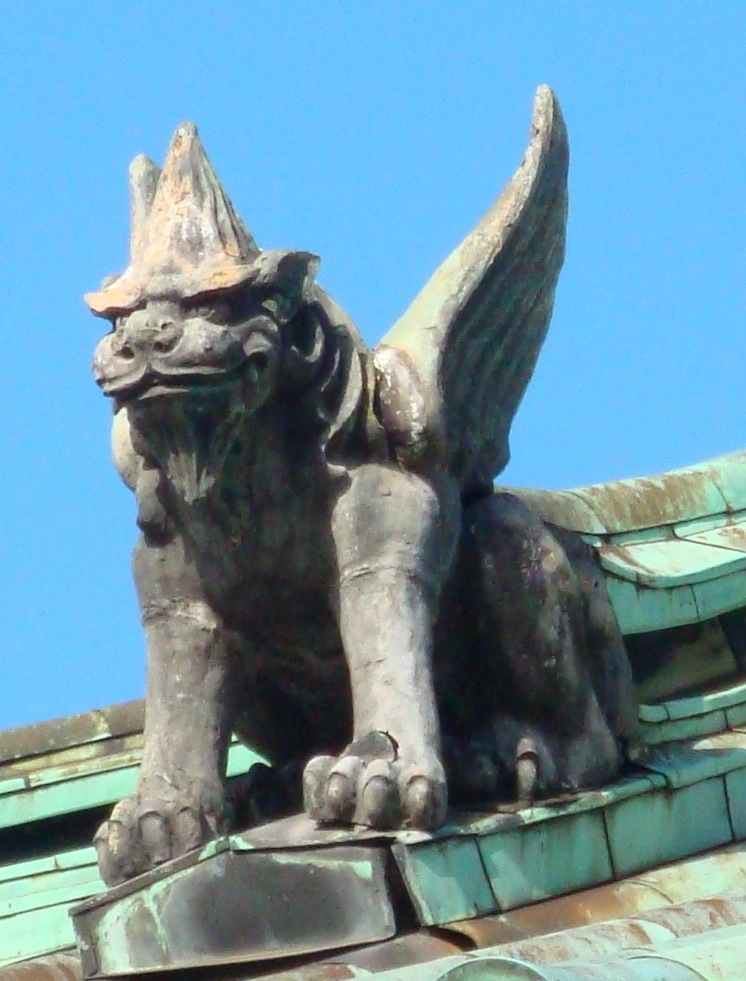Beyond Nature and Culture
Philippe Descola
(日本語解説版:一部の欧文文字が文字化けしています)
Radcliffe-Brown Lecture in Social Anthropology, 2005 (Proceedings of the British Academy 139, pp.137-155, 2006)
30
In a famous presidential address to The Royal Anthropological Institute, Radcliffe- Brown remarked that ‘we do not observe a “culture”, since that word denotes, not any concrete reality, but an abstraction’21. Quite true. But the same can be said of most anthropological concepts. We do not observe a ‘social structure’ either, or a kinship system, or the mysterious entelechy that Durkheimians call a repr?sentation collective. We only observe what we take as instantiations of what we believe are structured patterns of behaviour and recurrent patterns of thought. Understanding the nature and distribution of these patterns has been our concern for almost a century and a half, whatever our differences as to the level of reality on which they should be found. If, as I surmise, the ambition of anthropology is to contribute with its own methods to the task of elucidating the manner in which humans engage with their surroundings, how they identify and select some properties of the world for their use, and how they transform it by establishing, with elements of it and among themselves, constant or occasional relations of a remarkable but not infinite diversity, then, to pursue such an endeavour, we need to draw up the chart of these relations, to elicit their modes of compatibility and incompatibility, and to examine how they are actualised in ways of being that are immediately distinctive. I found that this task is much easier if one looks at differences rather than resemblances. Not the obvious differences between what we call cultures, the bread and butter of social constructionism, nor the unique mega-difference between humans and non-humans that is used to authenticate all other differences. The differences that count are those that accrue from the network of discontinuities of form, matter, behaviour or function that are offered to our grasp by the movement of the world. Discontinuities that are sometimes straightforward, sometimes barely outlined; discontinuities that we can recognize or ignore, emphasize or minimize, actualize or leave as potentialities; discontinuities which form the framework on which are hooked our relations with what Merleau-Ponty aptly called ‘the associate bodies’22. I found, in short, that there was no need to presuppose some original fault lines in this network of discontinuities, in particular one that would separate the realm of nature from the abode of speaking creatures; I found that, however useful this constitutional division may have been in triggering the accomplishments of Modernity, it has now outlived its moral and epistemological efficiency, thus making way for what I believe will be a new exciting period of intellectual and political turmoil.
王立人類学研究所の有名な会長講演で、ラドクリフ・ブラウンは、「私たちは 「文化
」を観察しているわけではない。その通りである。しかし、同じことが人類学のほとんどの概念についても言える。私たちは、「社会構造」も、親族関係システ
ムも、デュルケム主義者が「再送集団」と呼ぶ謎めいたエンテレケィも観察していない。われわれが観察するのは、構造化された行動パターンや反復する思考パ
ターンであると考えるもののインスタンスである。このようなパターンの性質と分布を理解することは、それがどのような現実のレベルで見出されるべきかにつ
いての見解の相違があるにせよ、ほぼ1世紀半にわたって私たちの関心事であった。もし私が推測するように、人類学の野望が、人間がどのように周囲の環境と
関わっているのか、どのように世界の特性を識別し、利用するために選択しているのか、そしてどのように世界の要素と、また人間自身の間で関係を構築し、世
界を変容させているのかを解明する作業に、独自の方法で貢献することであるとするならば、
そのような試みを追求するためには、これらの関係の図を描き、その互換性と非互換性の態様を引き出し、それらがどのように即座に特徴的な存在の仕方として
現実化されるかを調べる必要がある。この作業は、類似点よりもむしろ相違点に注目した方がずっと簡単であることがわかった。社会構築主義の糧となる、文化
と呼ばれるものの間の明らかな差異でもなければ、他のすべての差異を認証するために使われる、人間と人間以外の間のユニークなメガ差異でもない。重要な違
いとは、世界の動きによって私たちにもたらされる、形、物質、行動、機能の不連続性のネットワークから生じるものである。その不連続性とは、時に端的で、
時に輪郭をほとんど描かないものであり、私たちが認識することも無視することも、強調することも最小化することも、現実化することも潜在的なものとして残
すこともできるものである。要するに、私は、この不連続性のネットワークに何らかのオリジナルの断層を想定する必要はない、特に、自然の領域と言葉を発す
る生き物の住処とを分離するような断層を想定する必要はない、ということを発見した。この憲法上の区分が、近代性の達成の引き金としていかに有用であった
としても、今や、その道徳的・認識論的効率は失われており、したがって、知的・政治的混乱の新たな刺激的な時代になると私が信じるものへの道を開いてい
る、ということを発見したのである。
1 A. Barnard, History and Theory in Anthropology (Cambridge, CUP, 2000), p.73.
2 A. R. Radcliffe-Brown, Structure and Function in Primitive Society; essays and addresses (London, Cohen & West, 1952), p. 130.
3 Ph. Descola, ‘Societies of nature and the nature of society’, in A. Kuper (ed.) Conceptualizing Society (London, Routledge, 1992), pp. 107-126, and ‘Constructing natures: Symbolic ecology and social practice’, in Ph. Descola and G. P?lsson (eds.), Nature and Society: Anthropological Perspectives (London, Routledge, 1996), pp. 82-102.
4 For instance, T. Ingold, The Perception of the Environment. Essays in Livelihood, Dwelling and Skill (London, Routledge, 2000) and E. Viveiros de Castro, ‘Os pronomes cosmol?gicos e o perspectivismo amer?ndio’, Mana 2 (2) (1996), pp. 115-144.
5 C. L?vi-Strauss, La pens?e sauvage (Paris, Plon, 1962), pp. 154-155, my translation.
6 True, some non-human species also ascribe properties (at least relational and behavioural features) to humans and other non-humans; but before they can be included in a general theory of ontologies, a lot of ground remains to be covered.
7 I am very grateful to Tim Ingold and Peter Marshall for their insightful comments on an earlier draft of the lecture and for their suggestions of stylistic amendments.
8 E. Husserl, Erste Philosophie (1923-1924) II, Theorie der ph?nomenologischen Reduktion (Martinus Nijhoff, The Hague, 1959), pp. 61-64.
9 P. Bloom, Descartes’ Baby: How the Science of Child Development Explains What Makes Us Human (New York, Basic Books, 2004).
10 E. Viveiros de Castro, ‘Os pronomes cosmol?gicos’, p. 117.
11 J. von Uexku?ll, Streifzu?ge durch die Umwelten von Tieren und Menschen ? Bedeutungslehre (Hamburg, Rowohlt Verlag, 1956).
12 E. Viveiros de Castro, 'Os pronomes cosmol?gicos', p. 117 (my translation).
13 Ibid., p. 122.
14 W. B. Spencer et F. J. Gillen, The Native Tribes of Central Australia (London, Macmillan & Co, 1899), p. 202.
15 C. G. von Brandenstein, Names and Substance of the Australian Subsection System (Chicago, The University of Chicago Press, 1982), p. 54.
16 C. G. von Brandenstein, ‘Aboriginal Ecological Order in the South-West of Australia - Meanings and Examples’, Oceania XLVII (3) (1977), pp. 170-186.
17 M. Granet, La pens?e chinoise (Paris, Albin Michel, 1968 (1934)), p. 297.
18 A point which Viveiros de Castro was the first to make, ‘Os pronomes cosmol?gicos’, p. 129.
19 B. Latour, Nous n’avons jamais ?t? modernes. Essai d’anthropologie sym?trique (Paris, La D?couverte, 1991).
20 K. Århem, ‘The Cosmic Food Web: human-nature relatedness in the Northwest Amazon’, in Ph. Descola and G. P?lsson (eds.), Nature and Society, pp. 185-204.
21 A. R. Radcliffe-Brown, ‘On social structure’, Journal of the Royal Anthropological Institute 70 (1940), pp. 1-12, republished in Structure and Function, p. 190.
22 M. Merleau-Ponty, L’Oeil et l’Esprit (Paris, Gallimard, 1964), p. 13.

Copyright Mitzub'ixi Quq Chi'j, 2010